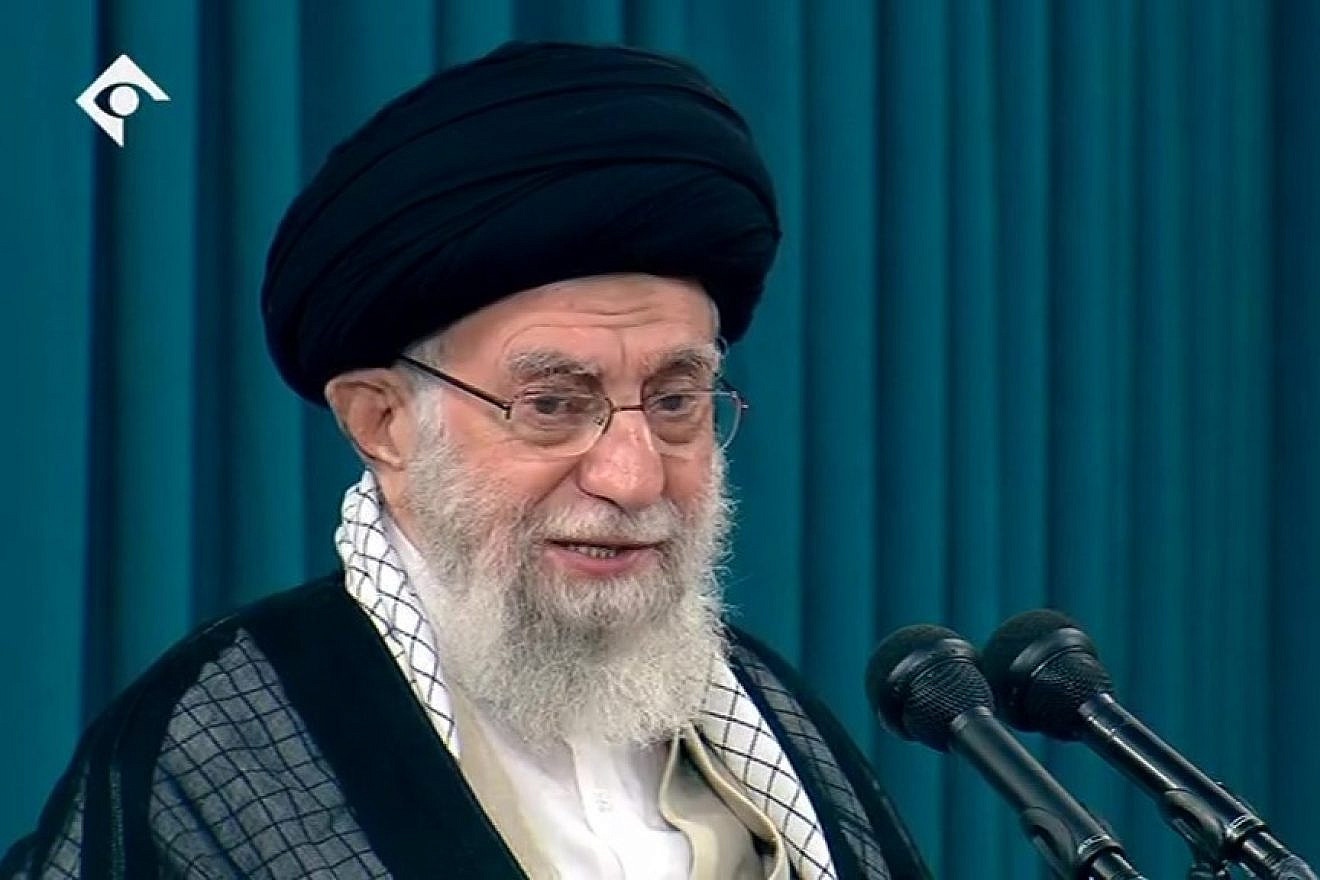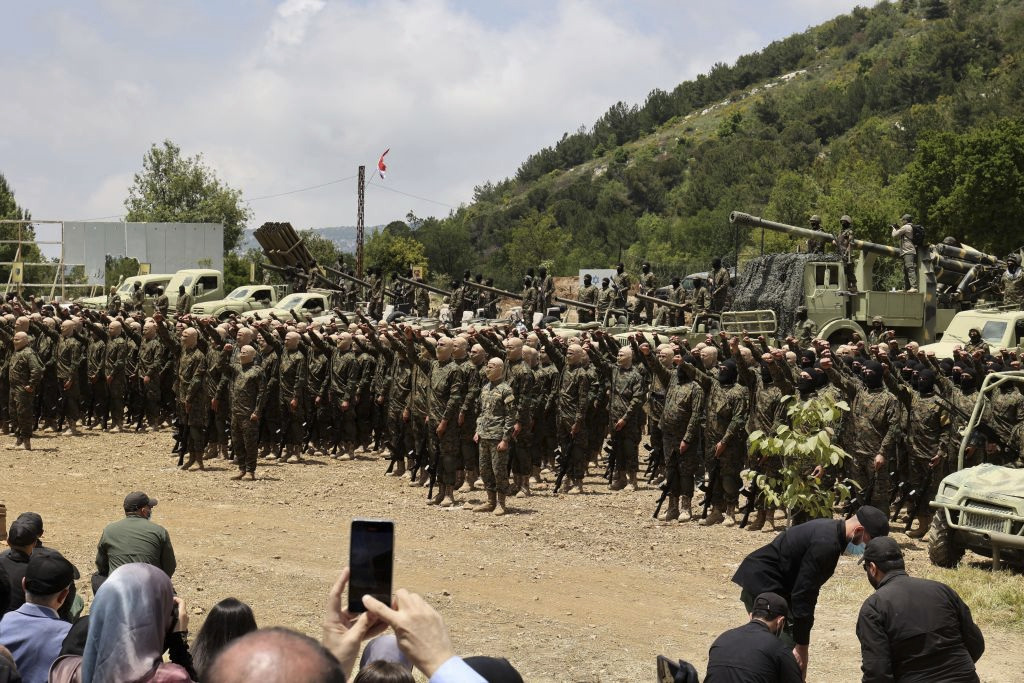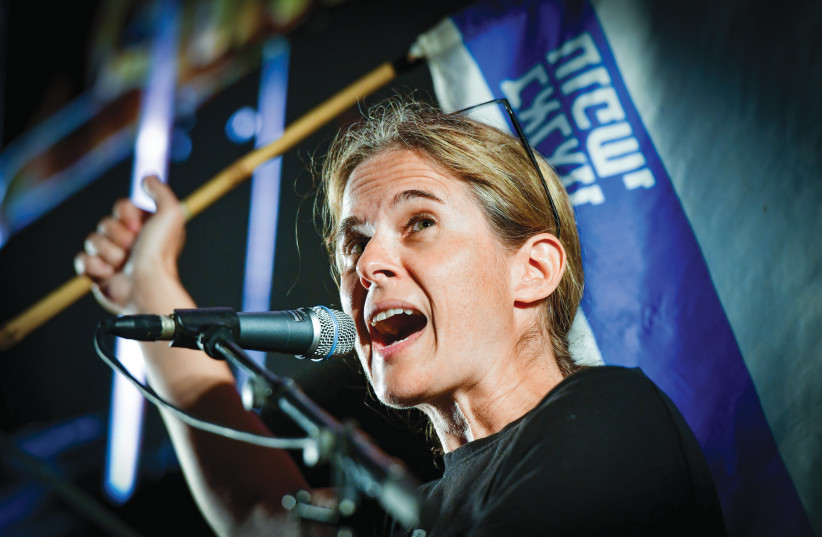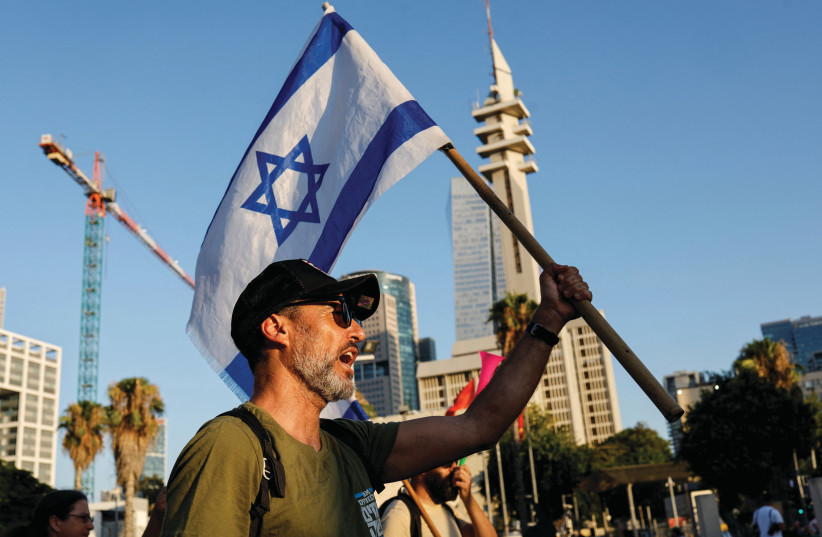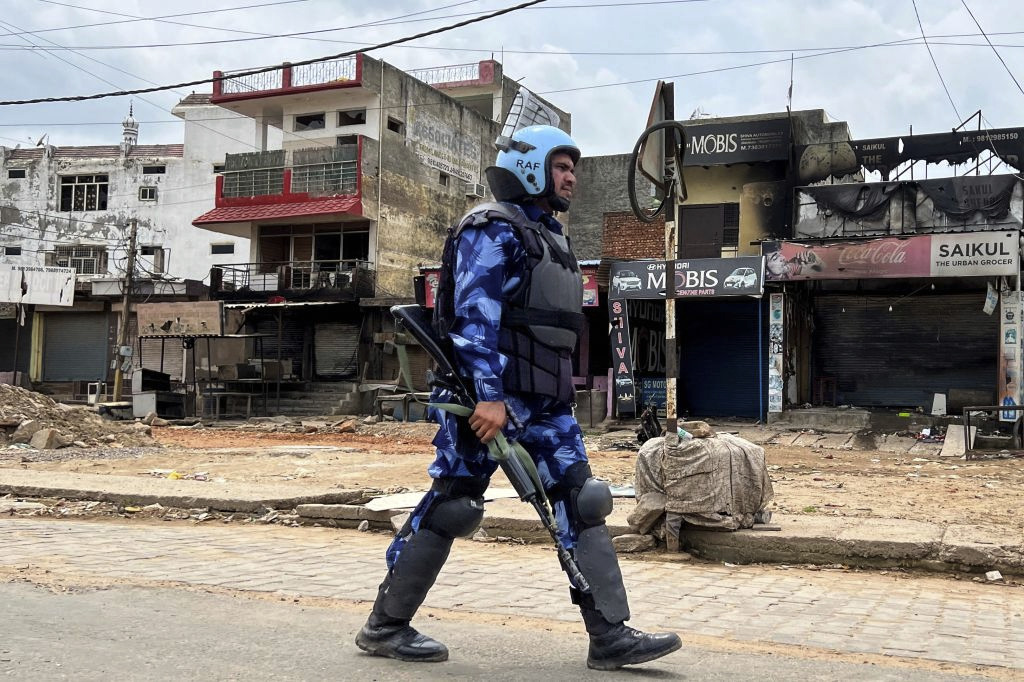by Michael Starr
A cursory review shows that some foreign interests have acted strategically to exert influence.
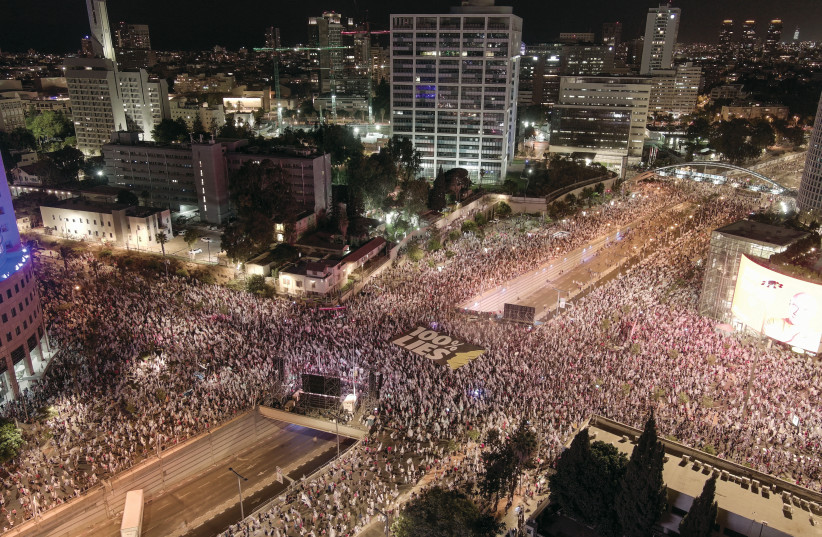 |
An aerial view shows protesters attending a
demonstration against Israeli Prime Minister Benjamin Netanyahu and his
nationalist coalition government’s judicial overhaul, in Tel Aviv,
August 5.
(photo credit: ILAN ROSENBERG/REUTERS)
|
The protests against judicial reform
have been remarkably successful in creating a mass movement and
influencing government policy. Bringing tens of thousands of people to
the street every week for over seven months is not just a political
feat, but a logistical marvel.
Arming
legions of demonstrators with all manner of flags, signs, and banners,
equipping them with a variety of slogan-emblazoned t-shirts, and setting
up camps complete with toilets, tents, and provisions turned citizens
into an effective force that brought a halt to the country and a freeze
of legislation in March. Yet coordinating and supplying such contingents
would seem to require significant financial backing. Coalition members
and reform activists have attacked the legitimacy of the protests as
foreign-funded.
There have been claims that rivals of Netanyahu, from former prime minister Ehud Barak
to former IDF chief of staff Dan Halutz, were behind a small circle of
influential Israelis who met after the November 2022 election to discuss
strategy and funding for a movement against the new government, well
before the judicial reform issue emerged. Supporters of the protests
insist that there’s no cabal behind them and they’ve exploded in a
grassroots, organic manner.
A
cursory review shows that the main sources of funding for the protests
have been local crowdsourcing and private donors, but that some foreign
interests have acted strategically to exert influence.
Crowdsourcing: Putting money where their mouth is
Kaplan Force
has become the organization most synonymous with the anti-reform
protests in recent months. The group is an evolution of the Black Flags
and Crime Minister Anti-Netanyahu protest groups that occupied Balfour
in 2020 until he was removed from power, and resumed protest when the
Likud leader returned to office in 2022. The rebranding as Kaplan Force
came with the success of the weekly Saturday protest in which Tel Aviv’s
Kaplan Street served as the main locus.
Physicist Shikma Bressler speaks during a protest, in Tel Aviv, August 5. (credit: AVSHALOM SASSONI/FLASH90)
Yet
while the eponymous street serves as the main physical venue, Kaplan
Force has shown over recent months that the most important location of
activism is in the hands of ordinary people – their phones. The group
has used well-maintained messaging app channels to issue press
statements, protest and travel schedules and instructions, photos and
videos, and manage donations.
“Kaplan
Force needs your support! Donations can be [made] through a wire
transfer to the following account name: The Black Flags LTD,” Kaplan
Force said in their public WhatsApp group on July 26.
Bank
transfers are far from the only means by which Kaplan has sought to
fund itself through crowdsourcing (small donations from a large pool of
people) rather than seeking large donations from individuals. The Kaplan
website prominently features a link for Paypal and Meshulam donations,
and a BeActive campaign has raised NIS 17,000.
“Kaplan
Force is now the exclusive producer and sponsor of Israel’s central
protests in Kaplan Tel Aviv, attracting hundreds of thousands of
democracy fighters every week. This requires significant funds!” the
group wrote in a July 31 message geared to Israeli and Jews abroad. “We
need your support!”
“Most
of the money comes from Israel,” said senior Kaplan activist Nadav
Galon. With outside funding, he said, there was concern over its
provenance, whether the source was “good or not.”
Millions
of shekels were raised through local crowdsourcing, which Galon said
showed that the public was “putting their money where their mouth is.”
With
Kaplan as the main sponsor of the weekly Saturday protest, it needed
the money to fund what it called “the largest production in Israel” in
terms of sound amplifiers, stages, and screens.
Kaplan
has become a symbol, said Nadav. Indeed, the group has used the funds
to brand the symbol on a rainbow of different colored t-shirts, hats,
and flags. The merchandise is produced using crowdsourced funds, which
was restated in a post last Saturday – now including Google Pay.
Almost
all the major groups feature prominently in donations promotion via
their online infrastructure, as a means of being active in the protest
movement.
Darkenu
raised NIS 178,792 to support its petition to the High Court of Justice
against the reasonableness standard law that passed on July 24. The
court is set to hear petitions on the matter on September 12.
Perhaps
the largest anti-reform crowdsource campaign is that of Hofshi
B’Artzenu. The organization, with funds gathered through the nonprofit
Future Blue and White, serves as a protest headquarters that unites and
coordinates all the different protest groups. Future Blue and White is
headed by former chief of staff for Ehud Barak Gilad Sher, ex-Shin Bet
(Israel Security Agency) head Ami Yaalon, and entrepreneur Orni
Petruschka. According to Bloomberg, Sher serves on the Hofshi B’Artzenu
steering committee with Halutz, former defense minister Moshe Ya’alon,
and former Barak Prime Minister’s Office head Yossi Kucik.
In
2022, 99% of Future Blue and White’s budget came from Israeli
donations, but these donations have likely exponentially grown through
its subsidiary organization. Hofshi B’Artzenu’s campaign on BeActive,
through 57,047 supporters, raised almost NIS 27,500,000 – with over NIS
600,000 donated in the last month. According to the group, these funds
are allocated to a variety of projects and also assist in financing the
200 protest groups affiliated with the protest headquarters.
“In
order for hundreds of thousands of people to go out to demonstrate
across the country, several times a week, you need buses, stages, signs,
flags, amplification equipment and screens, safety and authority
approvals, branded clothing, and more,” Hofshi B’Artzenu wrote on its
donation page.
The
group also used the funds towards legal resources for arrested
protesters, social media campaigns, billboards, and special projects. At
the late July Jerusalem Sacher Park protest encampment, retired IAF
brigadier-general and activist organizer Asaf Afmon said that the
protest headquarters in general provided the larger logistics umbrella,
helping to organize things like the hundreds of tents and the portable
bathrooms. Tables were set up with food for marchers who had walked from
Tel Aviv to Jerusalem. The smaller organizations brought their
activists and original branded content. Afmon also related how at the
beginning of the protests, there had been a dearth of Israeli flags, so
the protest headquarters had to purchase and ship 200,000 flags from
China.
CEOs, members, and students
The morning after the passing of the reasonableness standard bill on July 24, Israelis awoke to many of the major newspapers – Israel Hayom, Yediot Ahronoth, Haaretz, The Marker, and Calcalist – covering their front pages with a black square.
“A Dark Day for Israeli Democracy,” read the cover text. Inside the pages was the logo of the hi-tech protest.
The
funding for these expensive advertisements came from CEOs of companies
that were concerned about the reforms, explained hi-tech protest
representative Amir Breiner. Much of the funding for the hi-tech
protests comes from such private citizens, as well as other citizens,
with almost 50,000 donors. While hi-tech isn’t normally political, said
Breiner, its workers feel that certain rights are required to facilitate
innovation, and philanthropy is already a norm in the field.
“The Israeli public are familiar with donating,” said Breiner. “People are looking to donate.”
The
hi-tech protest belongs to the numerous profession-themed pop-up
groups, but many of the other leading organizations have been around for
years. Groups such as the Movement for Quality Government in Israel
fund themselves, in large part, through members fees. In 2022 MQG was
almost 18% funded by member dues, according to Guidestar. Almost 75% of
MQG’s funds came from Israeli donations, and 6.7% came from foreign
donations. It has been noted that MQG also received NIS 52,770 from the
US State Department, but this was for high-school programs. Other
organizations also rely on monthly donors. Darkenu claims that 5,000
people, 96% of them Israeli, give them monthly donations of around NIS
25 each.
Some
grassroots protest groups, such as the student protests, don’t really
have much financial backing. While they have a website for crowdsourced
donations, Ariana, a Technion student and protest coordinator said that
they “mostly make do with what we have.” Most of the student protest
signs and installations are handmade. They sometimes borrow equipment
from other protest groups or join them in projects.
Strategic foreign involvement
While
the majority of the funds for most protest groups appear to come from
local sources, the input of foreign sources has had a strategic
influence on the movement. This includes involvement in coordination
between the many protest organizations, injecting other causes into the
protests, and creating the initial sparks.
The
New Israel Fund has given upwards of NIS 2 million to different groups
according to an April 3 funding report. The report detailed that it gave
left-wing peace group Standing Together $20,000 for the production of
the “first demonstration that started the protest.” Indeed, press
statements and organizing messages for the first Saturday protest on
January 7 at Tel Aviv’s HaBimah Square primarily feature Standing
Together as the organizer. A great deal of the media content produced
that day featured purple Standing Together signage, and the stage
backdrop was emblazoned with their slogan “This is the home of all of
us.”
At the July 24 protest, Agmon also told The Jerusalem Post
that Standing Together had organized the permits for the first protest,
allowing their flags and signs to be more prominent during that event.
In the weekly protests, Standing Together became a less dominant force,
with the subsequent January 14 protest already being primarily led by
Black Flags and MQG. There were also signs of divisions, with Standing
Together accusing Ya’alon and MQG of excluding Arab and other minority
speakers.
While
Standing Together does receive foreign funding, including from foreign
political actors like peace consultants Forum Ziviler Friedensdienst
(forumZED) in 2022 and prior years – according to Guidestar in 2021
foreign donations accounted for 27% of its finances – the rest comes
from local Israeli donations.
NIF’s
funding of the first Saturday protest shows how foreign funding doesn’t
need to be the primary source of an organization’s income to influence
events, although it can be strategic. NIF claimed to have provided
$3,285 to fund the first protest against the judicial reform in
Beersheba. The demonstration was led by Rabbis for Human Rights, which
according to Guidestar in 2022 was funded almost 56% by foreign
donations.
Another
initial notable protest was one by Darkenu on January 6, outside Justice
Minister Yariv Levin’s home, just under 48 hours after his
announcement. Levin’s house became a popular site for protests, and
Darkenu was the first to argue that altering the judiciary could bring
international courts to bear on IDF soldiers.
In
2022, 54% of Darkenu’s support was from abroad, according to Guidestar.
The organization is also intimately tied to the US nonprofit OneVoice,
the principal project of American entrepreneur Daniel Lubetzky’s
PeaceWorks Foundation. Darkenu receives financial and strategic support
from OneVoice, one of the two primary beneficiaries of the $15 million
donated to Israeli and Palestinian causes since 2015. In 2020,
PeaceWorks received a US government grant from the Small Business
Administration. OneVoice had elicited controversy in 2015 over its
support of the anti-Netanyahu political campaign Victory15. The NGO was
accused of using a 2013 $300,000 US State Department grant to promote
Israeli-Palestinian peace negotiations to support V15. While a 2015
Senate Committee investigation said that there was no evidence that
grant funds were used in the campaign, it had used infrastructure in
part built with US government funds to support V15.
A protester shouts slogans near the Defence Ministry as IDF reservists
sign a pledge to suspend voluntary military service if the government
passes judicial overhaul legislation in Tel Aviv, July 19. (credit: AMIR
COHEN/REUTERS)
Coordinating a movement
While
the bulk of inter-organizational coordination seems to be managed by
Hofshi B’Artzenu, NIF also has its hand in the affair. The Civil Society
Protection Hub is a coordination project by several organizations and
is supported by NIF.
Hub spokesperson Dawn Kerlik told the Post
that the project “aims to provide defense, legal and mental support, as
well as knowledge and resources to organizations and individuals who
are affected by the narrowing democratic space in Israel, whether due to
government policies or directly by physical and/or digital attacks by
anti-democratic forces.”
NIF’s
Shatil program also provides consultation to help new organizations
develop – offering strategic, organizational, policy, media, and
financial development consulting, as well as partial or full subsidies.
Individual
groups have also received funds from NIF to help them better organize.
Idea – The Center for Liberal Democracy received $20,000 for a
coordinator responsible for connecting its 450-person network to active
protest groups. Donations totaling $30,000 were apportioned for activity
and social media coordinators at the volunteer-based Israeli Law
Professors’ Forum for Democracy. Another $25,000 was given to a civilian
headquarters to serve as a “war room” for protests.
Integrating causes
The
anti-judicial reform movement has seen many other political ideas and
ideologies bleed into the demonstrations. Some of these ideas can be
argued as connected to the reform, such as concerns about the protection
of rights, allegations that the reform is aimed at improving
Netanyahu’s legal situation regarding his ongoing corruption trials, and
the facilitation of coalition promises such as the ministerial
appointment of Shas chairman Arye Deri.
Many
protest organizations have a particular interest or angle that concerns
them about the reform – and still others had particular missions prior
to the reform, that seem naturally integrated into their work, such as
the anti-Netanyahu narrative of Black Flags and Crime Minister.
Other
ideas are less natural, such as issues with the budget, which become
part of a general anti-coalition sentiment. Agmon and Galon said that
the protest movement acts as a tolerant umbrella of different world
views and groups, even if they don’t always agree with one another in
private.
While many of
these ideas might naturally or accidentally be folded into the protest
movement, NIF funding shows another identifiable in the funding, in the
way that other political and ideological causes are intentionally
injected or conflated with the anti-reform effort.
One
of the most glaring examples was the $15,000 given to Looking at the
Occupation in the Eyes for an anti-occupation activist bloc “to
regularly present the subject of the occupation in the main centers of
the central protest.” Mitvim – The Israeli Institute for Regional
Foreign Policies, was given $20,000 to translate articles into English
and write position papers that discussed the threat to democracy and
annexation of the disputed territories.
“The
goal is to use the articles and position papers to encourage the
international community to use negative and positive incentives to
influence government moves,” wrote NIF.
NIF
funded Life and Environment to coordinate environmental organizations
in protest against the judicial reform. The Aguda – Israel’s LGBT Task
Force, received a donation of $10,000 for an LGBT community
demonstration. I’lam – the Arab Center for Media Freedom, Development
and Research was given $36,000 for a video on the consequences of the
overhaul on the Arab sector, and Women Against Violence was given
$29,000 for a campaign on how the reform would impact the rights of Arab
women.
Grassroots or astroturf?
The
political divisions around judicial reform have created suspicion, with
both sides challenging the legitimacy of each other’s political
movements.
While some
of these suspicions about foreign interference are warranted and should
be considered, for the most part, it seems that the protests are very
much homegrown – and that Israelis aren’t just protesting by marching
with their feet and raising their voices, they’re also demonstrating
with their wallets.
To learn more about how wealthy individuals are contributing to the judicial reform protest, click here.
To learn about how protest groups plan and coordinate against the judicial reform, click here.
Michael Starr
Source: https://www.jpost.com/israel-news/article-754327
Follow Middle East and Terrorism on Twitter
